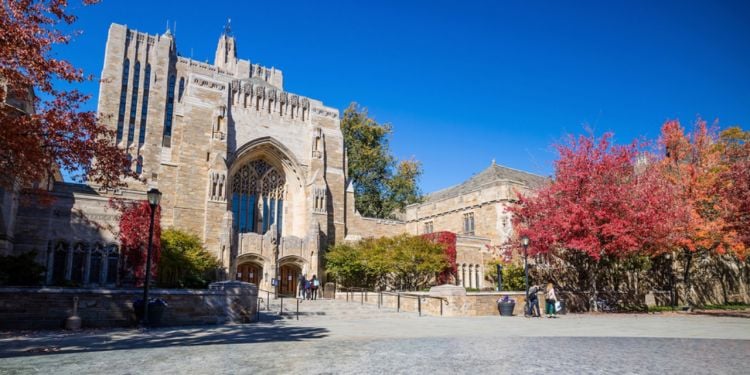
The United States is home to some of the world's most prestigious universities, and it's no surprise they draw thousands of students worldwide every year. North American universities are often very diverse, with students coming from all over the world to gain their qualifications. In fact, as of January 2023, there were 1.08 million international students with active study visas in the US. So, if you're ready to join their ranks and have the quintessential US college experience, we have collected some must-know information about studying in the USA.
Good to know:
In the USA, “college” and “university” are used interchangeably. This might be confusing if you hail from a country where “college” usually refers to high school.
Admissions and formalities in American universities
If you intend to study in the United States, you must first apply to a university, college, or higher educational institution. Although admission requirements will vary by institution, there are basic requirements to register in an American school or university. All prospective students should be able to produce school transcripts, relevant certificates, and letters of recommendation in English. Depending on the course and level of study, different standardized admissions tests are required to prove an adequate level of knowledge.
For undergraduates, the Scholastic Assessment Test (SAT) or the American College Test (ACT) assesses students' levels in English and mathematics.
Prospective graduate students in business, law, and medical programs will have to take a corresponding specialized test: the Graduate Management Admission Test (GMAT) for MBA students, the Medical College Admission Test (MCAT) for medical school students, and Law School Admissions Test (LSAT) for law students.
A Graduate Record Examination (GRE) is required for students enrolling in a Master's or Ph.D. program that is not included in one of the three specialized tests listed above.
If English is not your native language, the Test of English as a Foreign Language (TOEFL) may be required to assess your level of fluency.
Types of student visas in the US
There are three main types of student visas, and the type of program in which you're enrolled will determine which is right for you. Each has different benefits, so it's important to understand the implications before applying.
F-1 Visa
Students studying full-time in an American university or higher education institution should apply for an F-1 visa. It's important to note that you must be enrolled as a full-time student and maintain good grades to keep this visa. F-1 visa holders may work 20 hours per week, but only in an on-campus job. Off-campus work may require further applications with USCIS.
Good to know:
After the degree is completed, students on an F-1 visa may apply for the OPT visa (Optional Practical Training) or CPT visa (Curricular Practical Training), which usually lasts a year (or longer if the degree was a STEM degree). These visas will allow them to work full-time post-degree, but note that both visas expire if there are 90 cumulative days of unemployment.
J-1 Visa
Those interested in a US internship or other study-based activities like research must apply for a J-1 visa. These visas are valid for the duration of the program only. It's also important to note that some exchange visitors on the J-1 visa are subject to a two-year presence in their home country requirement. Basically, this means that you will need to return to your home country for a period of at least two years after your program is completed. This requirement is part of US law in the Immigration and Nationality Act, Section 212(e).
M-1 Visa
This designation is for students wishing to enroll in a technical or specialized study program that is not an academic institution. M-1 visa holders are not permitted to work. However, after the training program is completed, you may apply for a practical training extension (this may be paid). One month of practical training is allowed for every four months of study, up to a total of six months.
How to apply for a student visa to the US?
To begin the application process, you must be accepted into a work or study program. The university or host program will kick off the process by issuing a document, either Form I-20 or DS-2019, that certifies your eligibility for training and acceptance to their institution. At this point, you may proceed with the student visa application at the embassy or consulate of the United States in your country of residence.
Students must show evidence of sufficient funds to pay tuition and support themselves in the country while studying. Additionally, some visa types (such as the J-1) require proof that you intend to return to your home country after completing your program. Once all the required documents are collected and the associated fees paid, a final compulsory interview in English will be set with an immigration official. If successful, a student visa will be issued.
For more information about student exchange programs, partnerships, and grants or scholarships available, contact the prospective universities and the embassy or consulate of the United States in your country.
Important:
Regardless of which student visa you have, you must register online in the SEVIS system (Student and Exchange Visitor Information System) once your visa has been granted. Fees apply.
Tuition fees in the US
Tuition costs will vary greatly depending on the university or program you choose. In the US, private universities are much more expensive than public universities. Explore any options for scholarships and funding – both in your home country and offered by American institutions. Do a scholarship search to see if you fit any criteria and explore different funding options your country offers. There's a surprising amount of funding out there if you know where to look.
The average cost of tuition in a public college in the US is around $12,000 for in-state tuition. For out-of-state tuition, the average cost is around $28,000 — not including room and board. The average cost of tuition at a private institution is about $39,500. Other cost considerations are books, accommodation, and food (referred to as room and board), which are not included in these averages. These generally add another $12,000 USD to the total. Elite and Ivy League universities and graduate programs tend to be even more expensive.
Good to know:
The US College Affordability and Transparency Center is a government agency that offers information about college tuition costs. They offer tools to help you find the right school for your needs and a tuition calculator to help you determine the cost of attending the school of your choice.
Useful links:
US immigration and customs enforcement - SEVIS
US Department of State - student visas
United States Embassy worldwide directory
We do our best to provide accurate and up to date information. However, if you have noticed any inaccuracies in this article, please let us know in the comments section below.












Comments